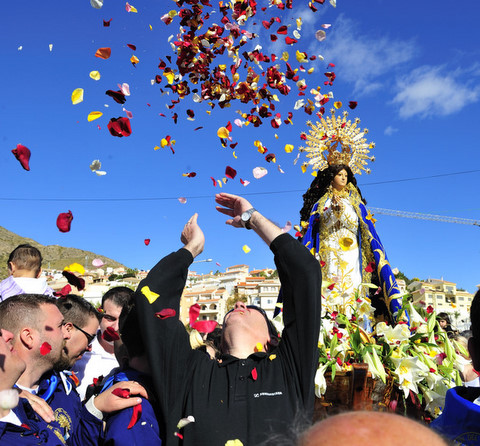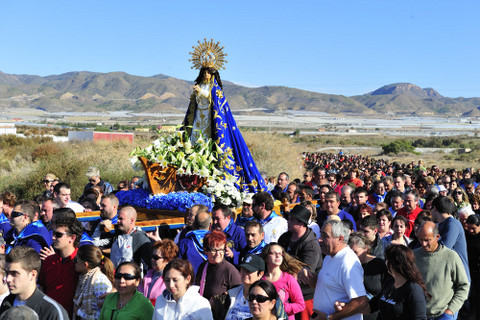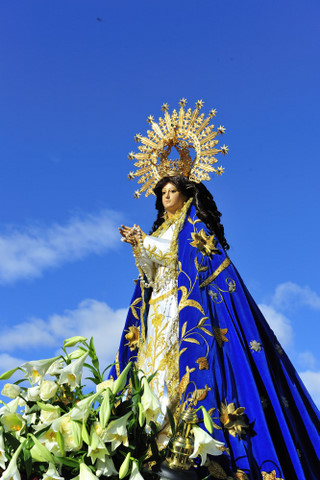

Guidelines for submitting articles to Santa Rosalia Today
Hello, and thank you for choosing Santa Rosalia.Today to publicise your organisation’s info or event.
Santa Rosalia Today is a website set up by Murcia Today specifically for residents of the urbanisation in Southwest Murcia, providing news and information on what’s happening in the local area, which is the largest English-speaking expat area in the Region of Murcia.
When submitting text to be included on Santa Rosalia Today, please abide by the following guidelines so we can upload your article as swiftly as possible:
Send an email to editor@spaintodayonline.com or contact@murciatoday.com
Attach the information in a Word Document or Google Doc
Include all relevant points, including:
Who is the organisation running the event?
Where is it happening?
When?
How much does it cost?
Is it necessary to book beforehand, or can people just show up on the day?
…but try not to exceed 300 words
Also attach a photo to illustrate your article, no more than 100kb

Torre de los Caballos in Bolnuevo, Mazarron
A 16th century watchtower built to protect Mazarrón against Berber pirates

The Torre de los Caballos is part of the defensive system of watchtowers which protected against the constant incursions by Berber pirates from north Africa, who threatened the Murcia coastline from the 16th to the 18th century.
The Berbers targeted the area with the aim of taking cattle, goods and hostages, who were either ransomed or sold as slaves in the markets of northern Africa. By the mid-16th century Mazarrón was home to around 2,100 people, many of them working in the mines or earning their living through fishing or agriculture, and the watchtowers were built to offer shelter to the townspeople when pirate ships approached.
In all there were five towers in the bay of Mazarrón, from La Azohía in the east to Bolnuevo in the west, with the Torre del Molinete in the centre (now Puerto de Mazarrón) slightly furhter inland to facilitate communication. Each defensive structure was entered via a rope on the second floor, but their primary function was to give warning of attack, using smoke signals by day and fire by night.
The Torre de los Caballos is known to have been completed by 1577 according to municipal records, and by 1660 was being used by Bolnuevo fishermen as a net store. However, by the 1750s it had fallen into disrepair.
 It stands alongside the Ermita de la Concepcion, a church which was completed in 1949, and from which the figure of the Virgen del Milagro sallies forth every November 17 in her "Romeria" to Mazarrón, a custom which dates back to 1947. This is part of the Fiestas del Milagro which also include the "Bolnuevo sardine festival" on the Sunday following the November 17: for details of the miracle celebrated in these fiestas click here.
It stands alongside the Ermita de la Concepcion, a church which was completed in 1949, and from which the figure of the Virgen del Milagro sallies forth every November 17 in her "Romeria" to Mazarrón, a custom which dates back to 1947. This is part of the Fiestas del Milagro which also include the "Bolnuevo sardine festival" on the Sunday following the November 17: for details of the miracle celebrated in these fiestas click here.
The tower can be visited by members of the public: see below for details.
CENTRO DE INTERPRETACIÓN TORRE DE LOS CABALLOS
Address: Avenida Mar Azul, 30877 Bolnuevo
Telephone: 968 595242
Email: factoriaromana@mazarron.es
Opening hours
Monday to Wednesday: closed
Thursday to Saturday: winter 10.00 to 13.00 and 17.00 to 20.00, summer 10.00 to 13.00 and 18.00 to 21.00
Sundays: 10.00 to 13.00
To be on the safe side, call the tourist office if making a special visit.
Please be aware that there are steps but no lift and to fully admire the views it is necessary to climb two flights of stairs.
Entry is free of charge.
The tower is worth visiting for its excellent views, the displays inside and as part of a trip to Bolnuevo: pop in to see the Bolnuevo erosions and the Punta de Gavilanes while in the area, and enjoy the numerous cafés, bars and restaurants in the village.
Those interested in the watchtowers might also want to visit the Torre de Santa Isabel in La Azohía (closed to visitors but again great views!), the Torre del Molinete and the Torre de la Cumbre or Torre de Santa Isabel in Puerto de Mazarron.
The remaining tower originally stood at the location of the lighthouse in Puerto de Mazarrón.
The Romeria of the Virgen del Milagro, Bolnuevo, Mazarrón

The roots of this celebration go back to the year of 1585, at a time when Mazarrón was a village living in fear of attack by the Berbers.
 The legend of the Mazarrón miracle began with an exchange of prisoners involving a man called Mami. He had once worked in Mazarón but was now working as a servant to the pirate Morato Arráez, who was standing on the deck of his ship looking at Mazarrón with a view to attack. Legend has it that the first step of the miracle of the Virgin of the Purísima was the intervention of Mami, who persuaded Arráez to hold back from a full attack and instead send out a scouting party.
The legend of the Mazarrón miracle began with an exchange of prisoners involving a man called Mami. He had once worked in Mazarón but was now working as a servant to the pirate Morato Arráez, who was standing on the deck of his ship looking at Mazarrón with a view to attack. Legend has it that the first step of the miracle of the Virgin of the Purísima was the intervention of Mami, who persuaded Arráez to hold back from a full attack and instead send out a scouting party.
When the scouting party approached the village men were sitting outside playing cards. Miraculously as they played, the evening bells rang out, announcing the sunset and fall of night, but for a reason no-one has ever managed to explain, that night the wrong bell rope was pulled and the alarm signal rang, alerting the town to the approach of pirates. The cardplayers leapt to their feet, one man shouting out in frustration that he had 14 horses, a term that apparently was significant to the card players, but which led the invaders to assume that a mounted force had anticipated their attack and was awaiting them intent on slaughter, so they rushed back to the beach.
At this point, a woman appeared on the beach, radiating light, arms raised to the heavens, a spectacle which terrorized the scouts to such an extent that they fled from the beach, throwing their arms into the sea and the boat sailed away from the waters of Mazarron, saving the village from certain pillage and probable destruction.
 The villagers went to the church of La Concepción to give thanks for their delivery and realized to their amazement that the lamp shining out next to the statue of the Virgin shone without oil, that the head of the Virgin was turned towards the sea, and her robe was wet with seawater and peppered with sand.
The villagers went to the church of La Concepción to give thanks for their delivery and realized to their amazement that the lamp shining out next to the statue of the Virgin shone without oil, that the head of the Virgin was turned towards the sea, and her robe was wet with seawater and peppered with sand.
Many testified to having seen this miraculous event, and this was borne out years later when white flowers mysteriously bloomed on the beach, announcing that there had indeed been a miracle in Bolnuevo.
Each year the figure of the Virgen is carried from her church in Bolnuevo into Mazarrón and then returned in triumph to Bolnuevo a week later in an extremely popular "Romería". Thousands gather on the beach following the Romeria to enjoy a barbecue.
For more visiting information as well as local news and events go to the home page of Mazarrón Today.
Sights to see in Mazarrón




































